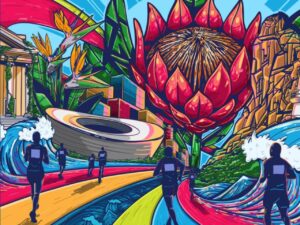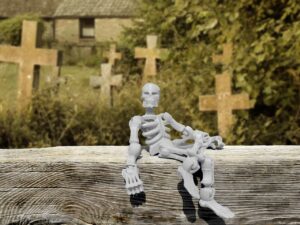You know we love a few nature snaps, so we couldn’t let this one slip by without comment.
The Royal Society, the world’s oldest independent scientific academy, dedicated to promoting excellence in science, just announced the results of their annual competition.
The contest “celebrates the power of photography to communicate science, and the role great images play in making science accessible to a wide audience”, and this year they attracted a record number of entrants.
That rather narcissistic polar bear up top is our first pick, which was the winner in the ‘Behaviour’ category and was taken while crossing the Fram Strait near the eastern Greenland coast.
Let’s run through six more plucked from the Guardian:
Overall winner, and winner in Earth Science and Climatology category
Icy Sugar Cubes by Peter Convey. A photograph taken over the English Coast (southern Antarctic peninsula) illustrating the scale of unusual bi-directional crevassing as an ice sheet is stretched in two directions over an underlying rise, with a Twin Otter aeroplane as scale.

Runner up, Behaviour category
Breeding by David Costantini. Arctic terns in Svalbard.

Some serious spading going on. Sorry, that’s my first warning.
Honourable mention, Behaviour category
Toss the scorpion – Indian roller playing with its kill by Susmita Datta. The image was taken during an early morning safari drive at Tadoba Andhari Tiger Reserve in India.

Honourable mention, Astronomy category
Within Reach by Petr Horalek. The skies above ESO’s Paranal Observatory resemble oil on water as greens, yellows and blues blend to create an iridescent skyscape. The rocky, barren landscape below evokes an alien world, complementing the cosmic display above.

Winner, Ecology and Environmental Science category
Waiting in the Shallows by Nico de Bruyn. Orcas suddenly enter a small bay at subantarctic Marion Island, surprising a small huddle of king penguins busy preening themselves in the water.

That’s a ripper right there. First they came for the great whites, and then they came for the penguins.
And to finish….
Runner up, Micro-imaging category
Water bear embryo by Vladimir Gross. A 50-hour-old embryo of the species Hypsibius dujardini, taken with a scanning electron microscope at a magnification of 1800x. The embryo in the image is approximately 1/15 of a millimetre in length.

If you liked that last one, then you’ll really enjoy the Nikon Small World photos (HERE).
Let’s leave it there for today.
[sourc:guardian]





